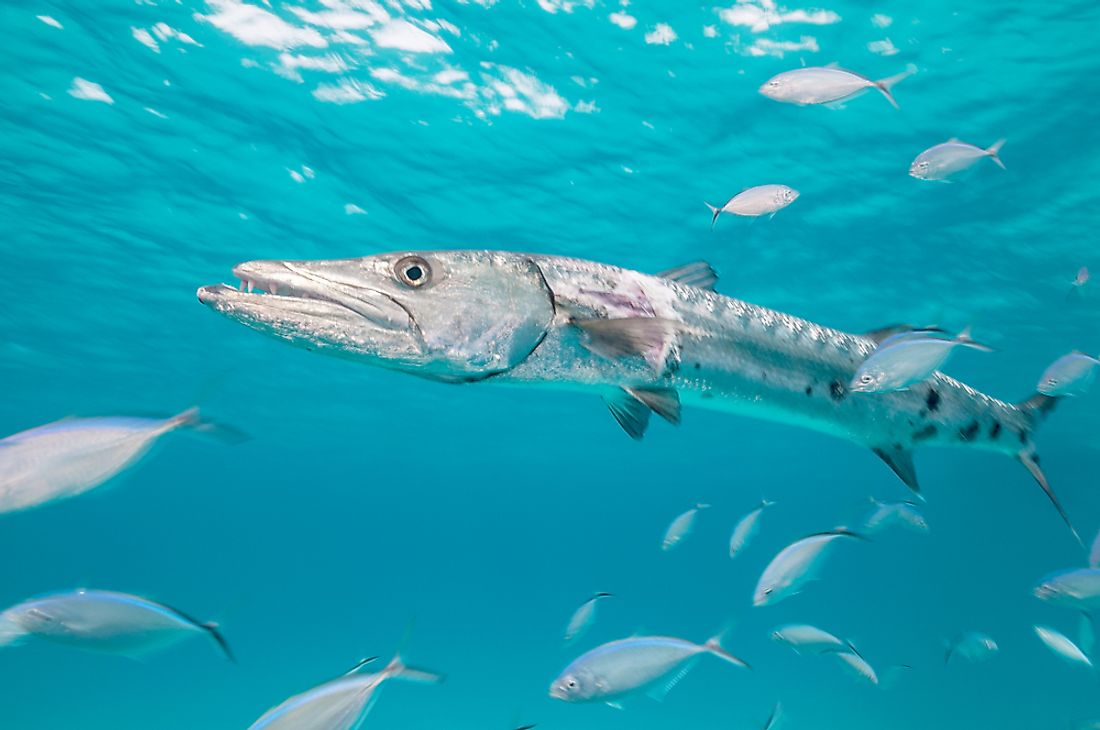Barracuda Facts - Animals of the Oceans

The barracuda is a salt-water fish found in tropical and sub-tropical oceans worldwide. There are over 20 species of barracuda. They are known for their large size and predatory nature. It is not uncommon for them to follow snorkelers, having mistaken them for bigger predators. Barracudas are harmless to human beings although a few non-lethal accidents have occurred.
Physical Description
Barracudas have large jaws, conspicuous and sharp teeth resembling fangs like those of a piranha. Their gill covers are covered with scales with a wide separation between the dorsal fins and a massive swim bladder. Usually, they are dark gray, green, blue or white on the upper body while the sides are silvery. The belly is mostly chalk-white and can grow to sizes of up to 65 inches in length.
Habitat and Range
The majority of the species of barracuda prefer to inhabit places located close to the shore like coral reefs, seagrass beds and mangroves in water with temperatures of around 16 or 17° Celsius. Even though some species can live in brackish water, barracuda are mainly sea creatures with the fish found in the Pacific, Atlantic, and the Indian Oceans. A few species are found in the Red and the Caribbean Sea.
Behavior
Barracudas are predators. Therefore, it comes as no surprise that they are highly ferocious and competitive especially when it comes to food and mating. Socially, the fish are loners although it’s not uncommon for younger and semi-grown barracudas coming together. Another interesting behavior of barracudas is that they are scavengers. By following bigger predators in the water, they can feed on the leftovers.
Diet
Being predators, the fish hunt by using bursts of speed that usually surprise their prey. The bursts of speed enable them to move with speeds of up to 35 mph. This speed gives barracudas a massive advantage over prey, particularly over short distances. Barracudas hunt by sight. For this reason, they are usually drawn to shiny objects because most of the fish they hunt reflect light. Divers and swimmers with shiny attire and equipment will usually encounter the occasional barracuda.
The main prey of barracudas ranges from small fish to fish almost as large as the barracudas. Bigger prey is consumed by the use of their teeth to tear away pieces of flesh. The species of fish eaten include mullets, groupers, grunts, herrings, anchovies, and others.
Reproduction
Concerning reproduction, little is known about barracudas. The information that is available is conflicting. However, there is data concerning the reproduction of great barracudas. Great barracudas lay their eggs then abandon them to drift and hatch on their own. After hatching, the little ones find their way to shallow waters to grow so that they can go back to the deeper waters upon maturity.
Males and females typically mature at the age of around three and four respectively. Their reproduction involves external fertilization, but the number of eggs laid during reproduction by a single barracuda is unknown. However, data from research on similar species place the estimate eggs laid at approximately half a million eggs each time.











